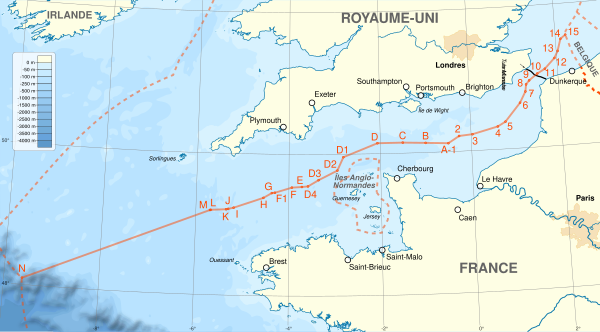
The Channel Tunnel, also known as the Chunnel, is a 50.46-kilometre (31.35 mi) underwater railway tunnel that connects Folkestone with Coquelles beneath the English Channel at the Strait of Dover. It is the only fixed link between the island of Great Britain and the European mainland. At its lowest point, it is 75 metres (246 ft) deep below the sea bed and 115 metres (377 ft) below sea level. At 37.9 kilometres (23.5 mi), it has the longest underwater section of any tunnel in the world, and is the third longest railway tunnel in the world. The speed limit for trains through the tunnel is 160 kilometres per hour (99 mph). The tunnel is owned and operated by the company Getlink, formerly "Groupe Eurotunnel".
The 49th parallel north is a circle of latitude that is 49° north of Earth's equator. It crosses Europe, Asia, the Pacific Ocean, North America, and the Atlantic Ocean.

The Ligne à Grande Vitesse Nord, typically shortened to LGV Nord, is a French 333-kilometre (207 mi)-long high-speed rail line, opened in 1993, that connects Paris to the Belgian border and the Channel Tunnel via Lille.
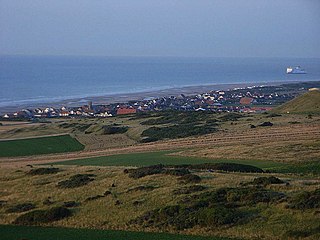
Sangatte is a commune in the Pas-de-Calais department on the northern coast of France on the English Channel. The name is of Flemish origin, meaning hole or gap in the sand.

Eurotunnel Le Shuttle is a railway shuttle service between Coquelles in Pas-de-Calais, France and Cheriton in Kent, United Kingdom. It conveys road vehicles and passengers by rail through the Channel Tunnel. Freight vehicles are carried in separate shuttle trains hauled by the same locomotives, that also contain a passenger carriage, known as the Club Car.

England comprises most of the central and southern two-thirds of the island of Great Britain, in addition to a number of small islands of which the largest is the Isle of Wight. England is bordered to the north by Scotland and to the west by Wales. It is closer to continental Europe than any other part of mainland Britain, divided from France only by a 33 km (21 mi) sea gap, the English Channel. The 50 km (31 mi) Channel Tunnel, near Folkestone, directly links England to mainland Europe. The English/French border is halfway along the tunnel.
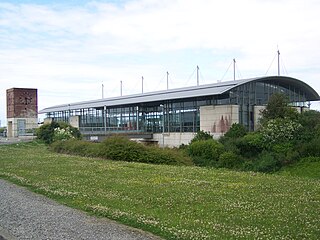
Calais-Fréthun station is an SNCF international railway station in the suburbs of Calais, France. It is one of four stations serving the town; the others are Calais-Ville in the town centre, Fontinettes in the suburbs, and Beau Marais in the suburbs.

Lille-Europe station is a SNCF railway station in Lille, France, on the LGV Nord high-speed railway. The station is primarily used for international Eurostar and long-distance SNCF TGV services, although some high-speed regional trains also call at the station. The station was built in 1993 to be used as a through station for trains between the UK, Belgium, and the Netherlands, as well as French TGV services, except those coming from Paris which normally terminate at Lille-Flandres. There is a 400 m (1,300 ft) walking distance between the two stations, which are also adjacent stops on the Lille Metro.
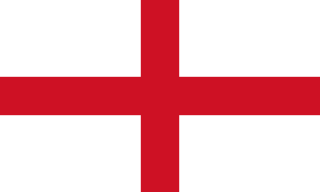
The Pale of Calais was a territory in Northern France ruled by the monarchs of England for more than two hundred years from 1347 to 1558. The area, which was taken following the Battle of Crécy in 1346 and the subsequent siege of Calais, was confirmed at the Treaty of Brétigny in 1360. It became an important economic centre for England in Europe’s textile trade centred in Flanders.

The Channel Tunnel Act 1987(c. 53) is an Act of the Parliament of the United Kingdom which authorised the construction of the Channel Tunnel between the United Kingdom and France in accordance with the Treaty of Canterbury, which was signed in 1986. Section 2 of the Act forbade any public subsidy of the project.

The French siege of Calais in early 1558 was part of the Italian War of 1551–1559 between France and England and their respective allies. It resulted in the seizure of the town by France.
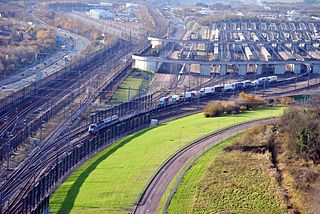
The Eurotunnel Folkestone Terminal is a railway terminal built for the transport of road-going vehicles on specially constructed trains through the Channel Tunnel. The terminal is one of two, with the Eurotunnel Calais Terminal located at Coquelles, near Calais.

The Eurotunnel Calais Terminal is a railway terminal built for the transport of road-going vehicles on specially constructed trains through the Channel Tunnel. The terminal is one of two, with the Eurotunnel Folkestone Terminal located at Cheriton, near Folkestone.
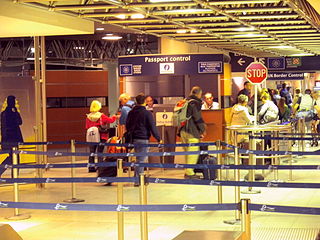
Juxtaposed controls are a reciprocal arrangement between Belgium, France, the Netherlands and the United Kingdom whereby border controls on certain cross-Channel routes take place before boarding the train or ferry, rather than upon arrival after disembarkation. With the exception of the Eurotunnel Shuttle route, customs checks remain unaffected by juxtaposed immigration controls and continue to take place upon arrival after disembarkation. Belgium, France and the Netherlands are all member states of the European Union and part of the border-free Schengen Area. The United Kingdom, on the other hand, has never participated in the Schengen Area, even when it was a member state of the European Union. As a result, juxtaposed controls aim to increase the convenience and efficiency of border checks when travelling by train or ferry between the Schengen Area and the UK by removing the need for immigration checks on arrival and by streamlining checks on departure. At the same time, juxtaposed controls are intended to detect and prevent illegal immigration. In 2016, there were over 56,000 instances when people were refused entry to the UK at the juxtaposed controls.
HMS Cooke (K471) was a British Captain-class frigate of the Royal Navy in commission during World War II. Originally constructed as the United States Navy Evarts-class destroyer escort USS Dempsey (DE-267), she served in the Royal Navy from 1943 to 1946.

Migrants have gathered in and around Calais, on the northern French coast, since at least the late 1990s seeking to enter the United Kingdom from the French port by crossing the Channel Tunnel or stowing away in the cargo area of lorries heading for ferries that cross the English Channel. During this time, informal camps of migrants have formed, the most notorious commonly referred to as the Calais Jungle. Other migrants come to the area because they are homeless while seeking asylum in France. The presence of migrants in and around Calais has affected the British and French governments, the Eurotunnel and P&O Ferries companies, and lorry drivers heading for the UK and their companies. EuroTunnel, the company that operates the Channel Tunnel, said that it intercepted more than 37,000 migrants between January and July 2015.

The Port of Calais in northern France is the fourth largest port in France and the largest for passenger traffic. It accounts for more than a third of economic activity in the town of Calais.
The Calais border barrier is an international border barrier under construction jointly by France and the United Kingdom designed to prevent illegal migrants from gaining access to the Channel Tunnel and from the port of Calais as a means of illegal entry to Britain. Construction, funded by Britain, began in September 2016.

